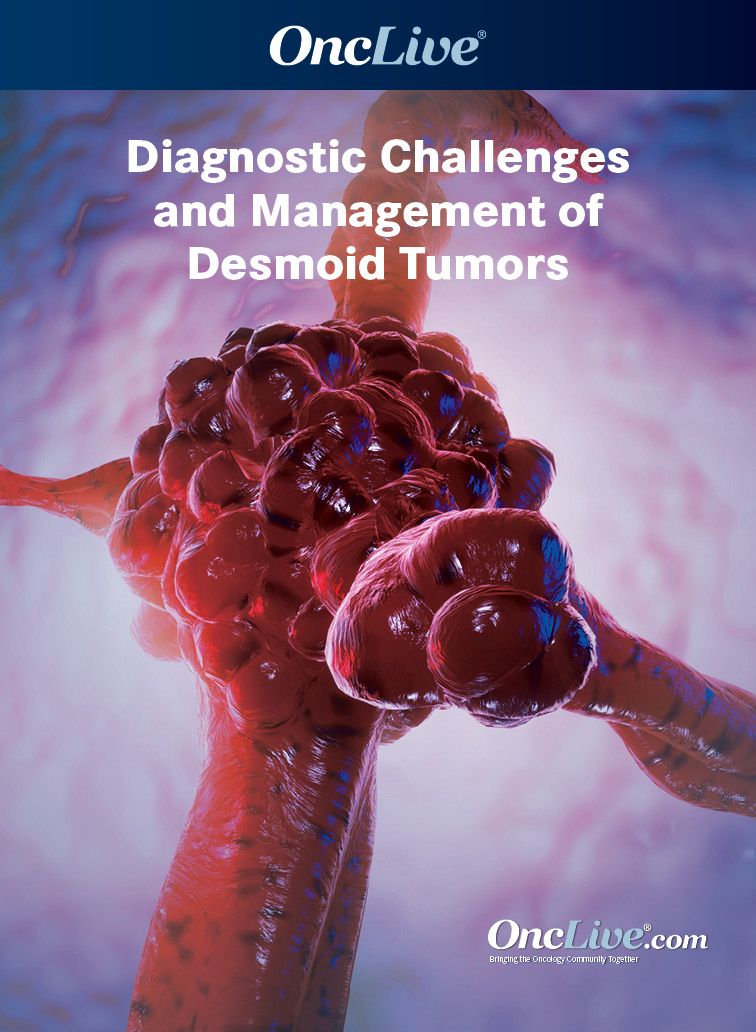Publication
Article
Current Management Strategies for Desmoid Tumors Are Marked by Less Surgery, More Systemic Options
Author(s):
Despite their rarity, the management of desmoid tumors has been an area of significant clinical change as the field has shifted away from aggressive surgical interventions to active surveillance and systemic therapies that are less morbid for patients.
Alexander J. Lazar, MD, PhD
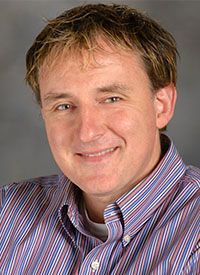
Despite their rarity, the management of desmoid tumors has been an area of significant clinical change as the field has shifted away from aggressive surgical interventions to active surveillance and systemic therapies that are less morbid for patients, said a group of experts during interviews with OncLive®, adding that the field will continue to evolve as treatment-informing tools emerge to guide decisions and improve outcomes.
“We want to turn this into a disease that is amenable with systemic therapies rather than surgery,” stated Alexander J. Lazar, MD, PhD, a professor in the Department of Pathology of the Division of Pathology/Lab Medicine, an academic surgical pathologist, director of the Sarcoma and Melanoma Clinical Genomics Program, and director of the Selective (Soft Tissue) Pathology Fellowship Training Program at The University of Texas MD Anderson Cancer Center in Houston, Texas.
Lazar was joined by:
- R. Lor Randall, MD, FACS, The David Linn Endowed Chair for Orthopaedic Surgery, professor and chair, Department of Orthopaedic Surgery, University of California (UC) Davis Comprehensive Cancer Center, UC Davis Health
- Breelyn Wilky, MD, director, Sarcoma Medical Oncology, deputy associate director, Clinical Research, University of Colorado Medicine in Aurora
- Gina Z. D’Amato, MD, associate professor, assistant director of clinical research, Department of Medicine, Sylvester Comprehensive Cancer Center, University of Miami Health System in Florida
- Ravin Ratan, MD, Med,assistant professor, Department of Sarcoma Medical Oncology, Division of Cancer Medicine, The University of Texas MD Anderson Cancer Center in Houston, Texas
The experts highlighted key challenges that remain in the management of desmoid tumors, emerging systemic options that are positioned to transform the paradigm further away from surgical interventions, and the importance of getting second opinions in this space.
What current challenges exist regarding identifying and diagnosing desmoid tumors?
Lazar: The big challenge with desmoid tumors is that they are rare. Not everybody has a lot of experience with them, so that creates some challenges [in the accuracy and timing of the diagnosis]. The other challenge is that under the microscope, they look a lot like reactive fibrosis or a scar. Unless one is thinking about desmoid tumors and including it in the differential diagnosis, we may not think about it as a diagnosis. We may think it is the reactive part of another [ongoing] process.
Ravin Ratan, MD, Med

Ratan: Desmoid tumors are very rare, in the range of a couple hundred cases a year in the United States. In practical terms, that means that most doctors a patient interacts with don’t see these often or might not know they exist. If a patient in the community is noticing swelling in an arm or leg, pain, stiffness, or any of the myriad of symptoms desmoid tumors can present with, it is likely that the doctor caring for them is not going to jump to a desmoid tumor [diagnosis]. The reality is that they probably shouldn't because most of those aches and pains are going to be conditions that are self-limited and don’t require immediate work-up. However, patients often have to persist and raise these symptoms over and over again before they are taken to a place for imaging or further work-up that results in the diagnosis of a desmoid tumor.
The other pathway we see to diagnosis is a patient had imaging done for some other reason, which incidentally finds a mass diagnosed as desmoid tumors. That is one issue. There isn’t a high index of suspicion ever for desmoid tumors because symptoms are often vague.
The second issue is once a mass is diagnosed and removed or biopsied, making sure that specimen gets put in front of a pathologist who has some expertise in the diagnosis of soft tissue tumors or desmoid is important. That doesn’t happen uniformly. By the time someone makes it to me at a specialty center, they usually come with a diagnosis, but that diagnosis can take months or longer.
Randall: If a patient has a known desmoid tumor, the first bridge to cross is whether they have an APC mutation and whether they are at risk for Gardner syndrome or multiple desmoid fibromatosis and polyps. That is hurdle No. 1. We know that patients with Gardner syndrome [can] have multiple relapses…because they [can] have multiple desmoids. Those patients need to be watched more aggressively than patients who do not have the mutation. Genetic counseling for patients with a solitary desmoid tumor, especially if they have a history of colon cancer in the family, is strongly recommended.
What challenges exist in terms of managing patients with these tumors?
Wilky: The first inclination most people have when they are told they have a desmoid tumor is to cut it out. The problem is that doing surgery on desmoid tumors can trigger recurrences in a fair number of patients, as many as up to 50% of tumors can recur after surgery. It’s important not to necessarily jump into surgery and to, instead, learn about different [treatment] options. Some desmoid tumors can regress on their own. [Approximately] 20% of desmoid tumors will simply go away by doing nothing. The biggest [things for patients] are to find an expert [on soft-tissue sarcoma], have their individual case analyzed [by a multidisciplinary team], and learn about the whole spectrum of options before jumping into a surgery or other procedure.
Lazar: The challenge right now in the field is determining at what point and in which cases do we decide to go with aggressive treatment and which we continue watchful waiting. We are hoping that some of the new oral or intravenous systemic therapies can make a real difference for these patients in absence of surgical management, which can sometimes be mutilating.
Breelyn Wilky, MD
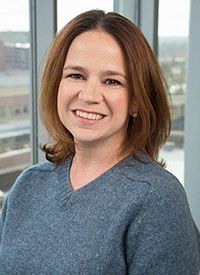
How often do you see patients with a misdiagnosed desmoid tumor? What are some best practices for avoiding that?
Lazar: There can sometimes be misclassification, but probably more importantly, we have seen a delay in diagnosis because it takes people awhile to come up with the idea [of desmoid tumors] or to [transfer the case] to someone who has more experience with this disease. Because we have a lot more tools to differentiate different types of spindle-cell neoplasms, the number of misdiagnoses has probably gone down over time. However, there is still some delay in diagnosis because of challenges in recognizing this disease as a definitive tumor as opposed to a reactive process.
Wilky: If a patient is told that they have a very rare tumor, [such as] a desmoid tumor, the first thing they need to do is have their tissue rereviewed at a [center specialized in soft-tissue sarcomas]. That means sometimes asking for a second opinion or asking whoever did their biopsy to send it to an expert center. I have had patients with desmoid tumors who were told they have a full-blown sarcoma and needed chemoradiation. I’ve also had patients who were told they had benign disease when they did have a full-blown sarcoma that required additional therapies. This goes for any diagnosis of a cancer, precancer, or benign tumor––second-opinion review by an expert center for rare diseases is critical to ensure the diagnosis is accurate.
What is your current treatment approach for these patients? Has it changed with recent advancements in available therapies?
D’Amato: Old school thinking was surgery. Now we have specific guidelines that were put together by the Desmoid Tumor Research Foundation. Sarcoma experts recommend we limit surgery after observation to an area that would not cause any long-term dysfunction. The tumor might die out over time, but once we remove something surgically, we can’t bring it back. We don’t want to leave someone with a deficit.
If we do medical management, adverse events [AEs] can be reversed and, to our knowledge, we don’t see many long-term complications with most of our systemic therapies. Some [systemic options] can cause long-term complications, but they are much less than that of surgery. Systemic therapy is recommended based on where the tumor is located, how symptomatic the patient is, and whether [the desmoid tumor] is potentially organ- or life-threatening.
Mesenteric masses are probably the most dangerous, per se, and would be [treated with] sorafenib [Nexavar] in the first-line setting or chemotherapy if it is bothersome [to the patient].
The sorafenib dose is 400 mg, which is different from the cancer dose of 800 mg. It tends to be well tolerated although there are certain AEs, such as hand-foot-skin reaction, rash, elevated blood pressure, nausea, and diarrhea; however, most of those can be controlled with concomitant medications or stopping the drug for a bit then restarting. We don’t know the long-term complications of these drugs because they haven’t been around long enough.
With the chemotherapy, that is a different situation. Those patients can have more AEs, including pancytopenia, infections, hair loss, and secondary cancers about 5 years [after stopping chemotherapy]. We have to think about [those AEs] and [reserve chemotherapy] for when [a desmoid tumor] is really threatening, like intra-abdominal tumors or tumors near the neck that can press on important structures.
R. Lor Randall, MD, FACS
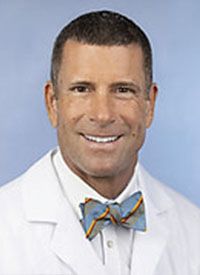
In terms of treatment selection, what factors need to be considered?
Randall: Don’t make the treatment worse than the disease. Historically, we used to think of desmoid tumors [as] cancers and [use] aggressive [regimens to gain] local control at any expense. We dealt with the repercussions after, but sometimes we mutilated some of these patients all for the concept of a negative margin and left them with a worse problem than when they started.
Sometimes, a very well-intended but inexperienced surgeon in the realm of desmoid tumors treats these patients aggressively with surgery and radiation, leaving them left with disfigurement, pain, and identity issues. Don’t make the treatment worse than the problem. The take-home message for medical oncologists is to slow down, talk to someone who has experience with desmoid tumors, and then have a very informed discussion with the patient.
Historically, surgery plus or minus radiation therapy was the best treatment modality for patients with desmoid tumors. Now, surgery plays an important but less broad role in the management of desmoid tumors. Often, someone will come in with a solitary desmoid tumor. The first-line option is to watch it if it isn’t bothering them to look for progression. If it looks like it is progressing, there are a variety of noncytotoxic and cytotoxic medical therapies that can be offered.
Lazar: The most important consideration [for patients] with desmoid tumors is the course of the disease. If the patient has stable disease, they can be safely watched . If it is a disease that is rapidly progressing and causing other problems in terms of pain or dysfunction, we have to quickly think about other interventions we can do, such as surgery, radiation, or systemic therapies.
What systemic options have demonstrated efficacy in this patient population?
Wilky: Sorafenib was studied in a phase 3 trial [NCT02066181] for [patients with] desmoid tumors, which was amazing because this is a rare disease, but we were able to do a phase 3 study.1 That study was a slam dunk. Clearly, this is an active drug. There are AEs with [sorafenib], but many times, this is a great option for patients to consider.
Gina Z. D’Amato, MD
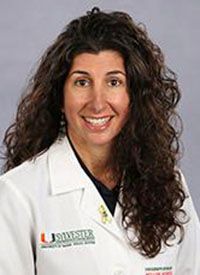
Please speak to some of the emerging systemic therapies we’re seeing in this space.
D’Amato: We have some new clinical trials with gamma-secretase inhibitors [GSIs]. We have DeFi, the phase 3 clinical trial [NCT03785964] comparing nirogacestat with placebo. That trial is currently closed to enrollment, so we are anxiously awaiting the results of that.
Wilky: We are all excited to see if [nirogacestat] could potentially be [a] drug approved for [patients with] desmoid tumors. [Nirogacestat] looked promising in older [data from] phase 2 studies and the [phase 3 data] is about to reach maturity. Interventional approaches, such as cryoablation where we can freeze the tumor, have also become exciting. These are areas of active investigation.
Lazar: Some direct inhibitors of β-catenin, which is the gene that is normally mutated in these tumors, [are under investigation]. β-catenin drives oncogenesis, and some direct inhibitors of that pathway may have some efficacy as well [for patients with desmoid tumors].
Ratan: There is another drug called tegavivint, which is also being investigated [for] the treatment of desmoid fibromatosis. That drug works a little bit differently as it is not a GSI. It is a drug that seems to directly look at the interaction between β-catenin and TBL1, which stabilizes β-catenin. Accumulation of β-catenin [results in cell proliferation]. Tegavivnt seems to reverse that accumulation [of β-catenin] through direct inhibition between β-catenin and a stabilizing protein.
What are the most pressing unmet needs in this space, and how are they being addressed?
Wilky: In general, the types of desmoid tumors that are the hardest to deal with are those that occur in conjunction with a disease called familial adenomatous polyposis [FAP]. Most desmoid [tumors] are sporadic and we don’t know what causes them. They [can] occur in one place and are sometimes associated with an injury [or surgical procedure]. However, people with FAP have an inherited tendency to develop desmoid tumors. The problem is that they can get multiple desmoids in multiple locations, often inside the abdominal cavity. These tumors can be very difficult to treat or manage.
Those are the patients who I’ve had the biggest challenges with creating meaningful quality of life because they go through multiple surgeries and may have long-term issues from bowel obstructions or resections. Our hope is that newer drugs will prove to be just as effective in that group of patients, but that is an area where we still have big challenges to help our patients live better lives and control the disease.
What does the future look like in this space?
Lazar: We have a lot more tools for [desmoid tumors] than we used to. Some of these new systemic therapies have demonstrated efficacy or are currently in clinical trials, which will give us new tools. We now know also that watchful waiting can be an effective way to follow and manage these patients.
What would be helpful are algorithms to evaluate patients so that we [can identify] which [optimal treatment strategies for] patient. Right now, the default, unless we can’t do otherwise, is watchful waiting. Then, as the biology of the disease reveals itself, we start thinking about what interventions we could use to benefit the patient.
Funding from SpringWorks Therapeutics/Content Developed Independently by OncLive
Reference
- Gounder MM, Mahoney MR, Van Time BA, et al. Sorafenib for advanced and refractory desmoid tumors. N Engl J Med. 2018;379(25):2417-2428. doi:10.1056/NEJMoa1805052
